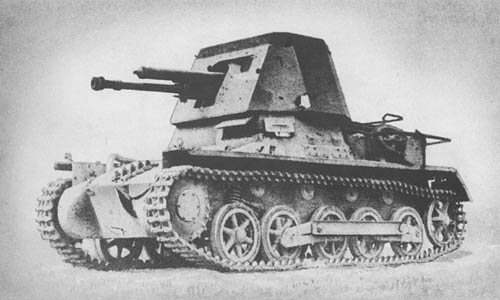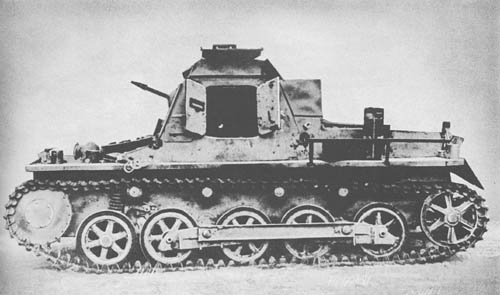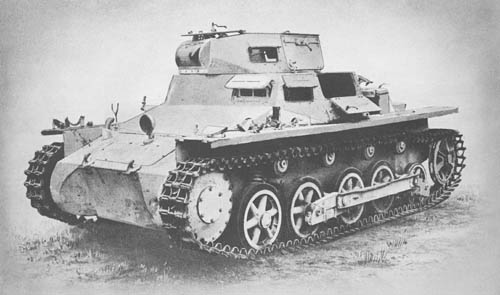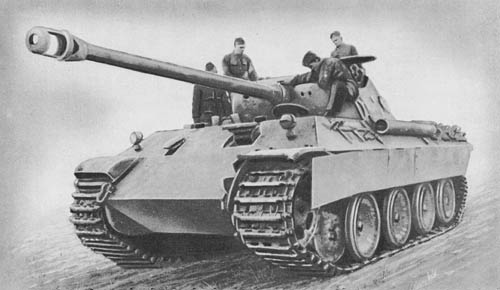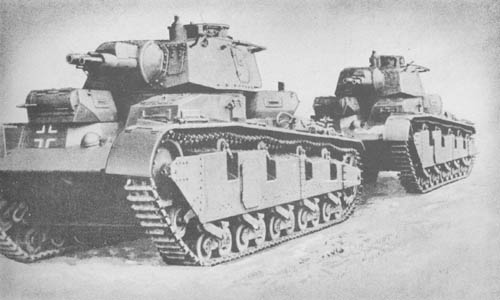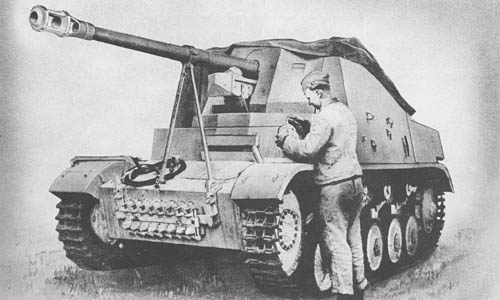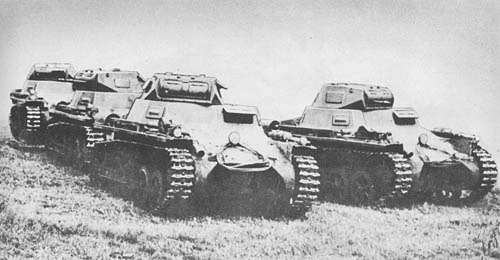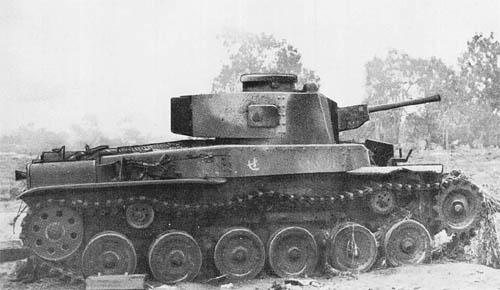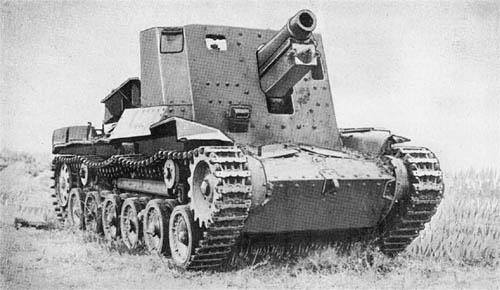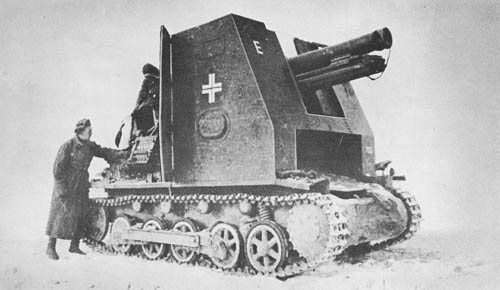
This equipment consists of the 15 cm heavy infantry howitzer mounted on a turretless Pz. Kpfw. I model “B” chassis. This howitzer is also mounted on the Pz. Kpfw. II, and the Pz. Kpfw 38 (t) chassis. Due to the additional weight carried by the chassis, which approximates 3 tons more than its normal Pz. Kpfw. I complement, its road performance does not equal that of the Pz. Kpfw. I tank. The general appearance suggests that the equipment is overloaded.
The howitzer, which probably retains its wheels and trails, in addition to its original shield, traversing and elevating mechanisms, is mounted high in a tall, three-sided shield, and fires forward. The shield is 10 mm thick and is open at the top and rear.
The 15 cm. s.I.G. 33 is a standard German infantry support weapon. It has a length of 64.57 ins. and is used for either high or low trajectory shooting. It has a muzzle velocity of 790 f.s. and a maximum effective range of 5140 yards firing the 83.6 lb. H.E. shell with percussion fuze s.I. gr. Z. 23. The breech mechanism is of standard German type, and is similar to the 10.5 cm. l.F.H. 18 breech mechanism. The elevating gear is operated from the right. It consists of a worm gear, rack, pinion and shafting. The traversing gear is operated from the left by a system of gear wheels and shafting. The recoil system of buffer and recuperator is housed in a casing underneath the barrel.
Two types of ammunition are fired, the 15 cm I. Gr. 33 and the 15 cm I. Gr. 38. The two types of ammunition are for all practical purposes identical except that the former has a screwed-in base plate. The only other shell that this weapon is known to fire is a smoke shell, the 15 cm I. Gr. 38 Nb. The same percussion fuze, s.I. Gr. Z. 23, which weighs 75 lb., is used in each case.
SPECIFICATIONS
| Weight | 9 tons | |
| Length | 14 ft., 6 ins. | |
| Width | 6 ft., 9 ins. | |
| Height (approx.) | 11 ft. | |
| Ground clearance | 11 1/2 ins. | |
| Tread centers | 5 ft., 5 ins. | |
| Ground contact | 8 ft. | |
| Width of track | 11 ins. | |
| Pitch of track | 3 11/16 ins. | |
| Track links | 99 | |
| Fording depth | 2 ft. | |
| Theoretical radius of action | ||
| Roads | 87 miles | |
| Cross-country | 72 miles | |
| Speed | ||
| Roads | ||
| Cross-country | ||
| Armor | ||
| Front plate | 15 mm | |
| Sides | 10 mm | |
| Gun shield | 10 mm | |
| Armament | 15 cm S.I.G. 33 | |
| Ammunition (rds.) | ||
| Engine | 100 h.p. Maybach Model N.L. 38 T | |
| Transmission | 5 speeds forward, 1 reverse | |
| Steering | Clutch brake | |
| Crew | Probably 4 |
German: p. 5
